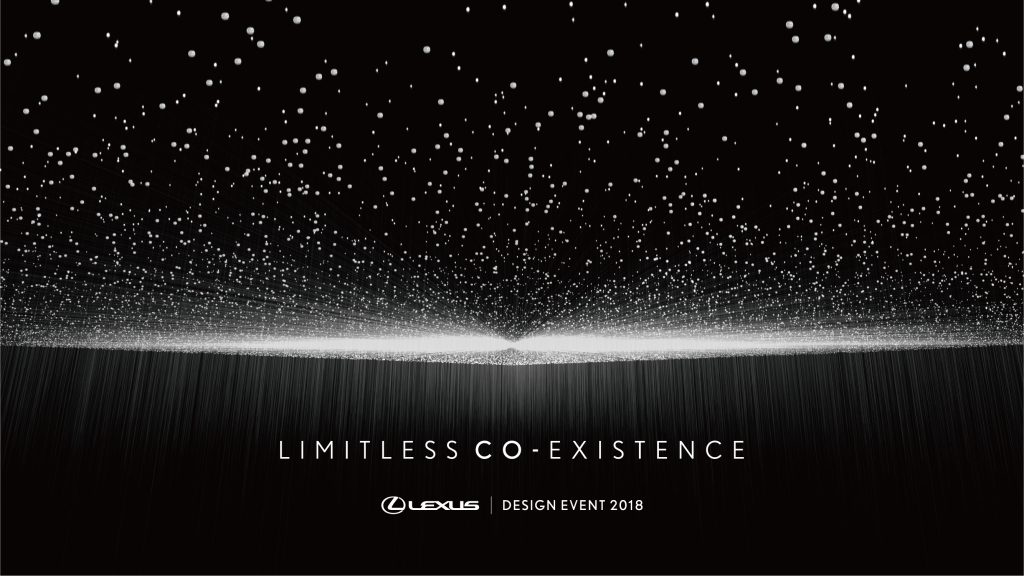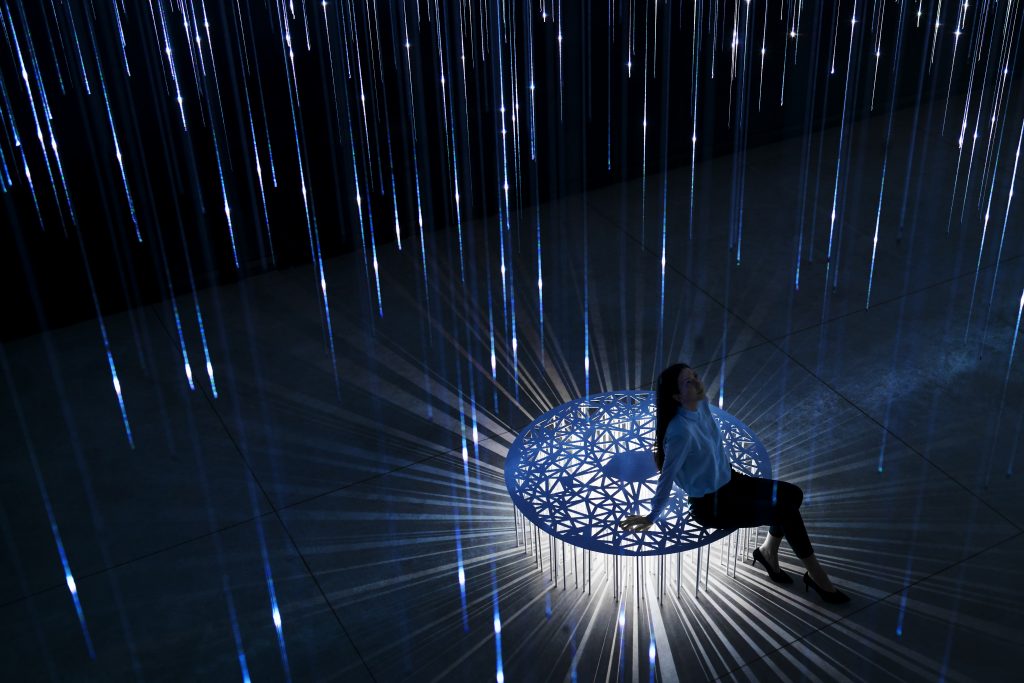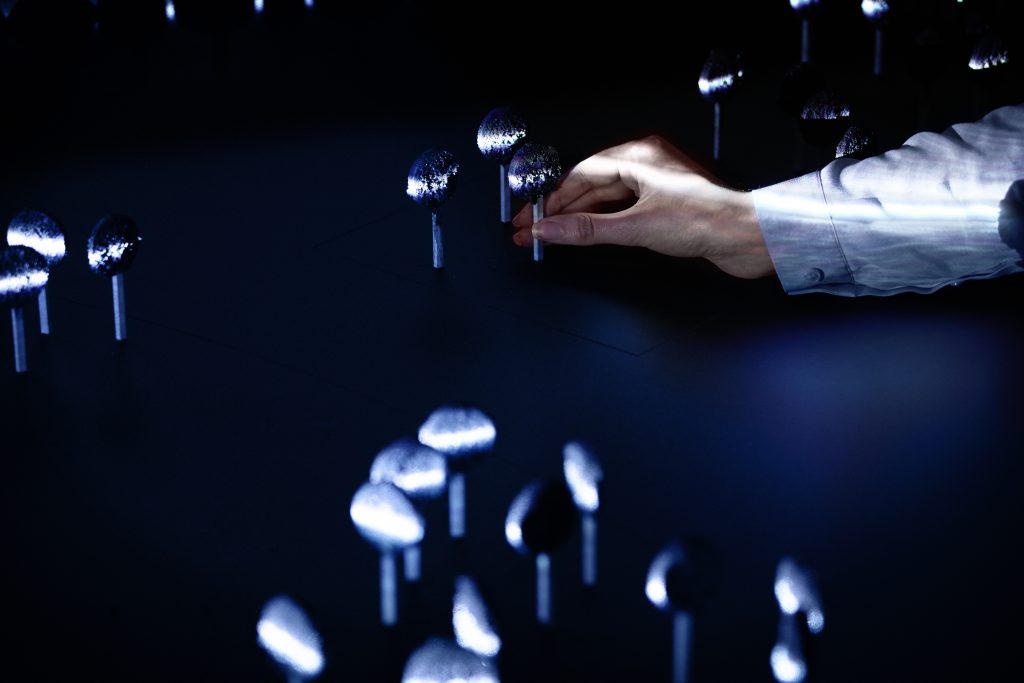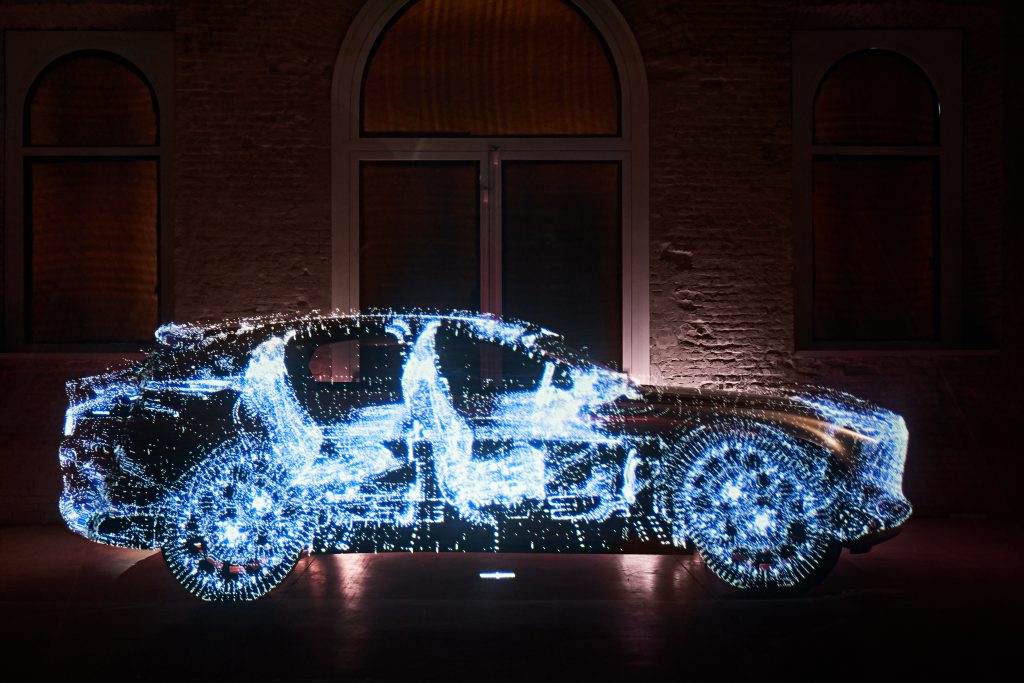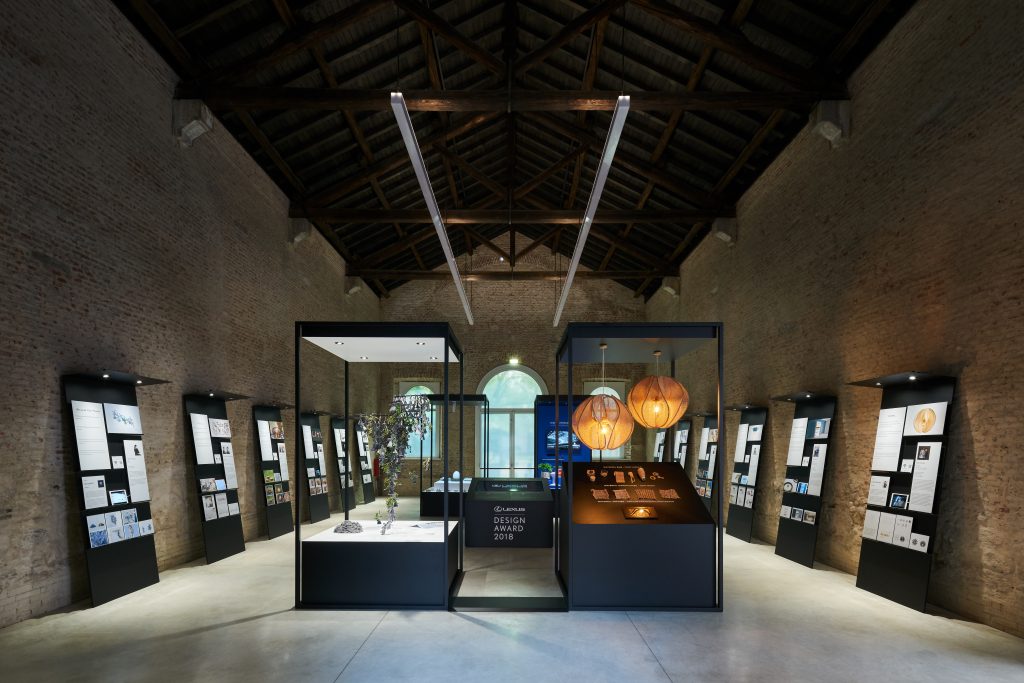Limitless Co-Existence: The Lexus Design Event at Milan Design Week 2018
The event
The Lexus Design Event will take place in the Cavallerizze in the Leonardo da Vinci Museum of Science and Technology in Milan, a newly restored 19th century monastery and stables complex.
From noon to 2pm on 16 April, the focus will be the results of the Lexus Design Award 2018 and the announcement of the Grand Prix winner. The award ceremony will follow at an evening reception from 7pm. The Lexus venue and displays will be open to the public from 17 to 22 April, daily from 10am to 8pm.
The philosophy
Can you imagine a world where individuals can understand, respect and care about each other, without exceptions? Lexus can and it aims to harness the power of design and innovation to shine a light on everyone, so that no one is left in the shadows, and the barriers to exploring our true potential are removed.
Lexus believes design can be a catalyst for change, empowerment and inclusiveness. It is a powerful force that can transform the ordinary into the extraordinary and reveal that with the concept of “CO-“ – as in co-operation, collaboration and co-existence – the possibilities are limitless.
The theme
The theme for the Lexus Design Award 2018 and the Lexus Design Event is “CO-“, the Latin prefix that means with, or together in harmony.
Lexus seeks the harmonious coexistence of nature and society through sustainable design. “CO-“ is an approach which allows us to explore our potential and that of our environment, by creating new possibilities through collaboration, co-ordination, connection and the like. “CO-“ can help us conceive a better world.
Sota Ichikawa, designer of the Lexus space
Japanese architect Socha Ichikawa of dNA (doubleNegatives Architecture) believes that architecture’s potential is restricted by conventional methods of measuring space. By programming computers to interpret space from an omni-directional perspective, he frees his imagination to explore new dimensions.
Ichikawa’s awards include the Algorithmic Design Quest Architecture Vanguard and Programming Vanguard prizes, and ARS Electronica 05 and 09 INTERACTIVE Art Honorary Mention and the Wonders in Annual Development and Architecture Award. The urban research and design group hclab is supporting this project; Ichikawa is a member of hclab and his hclab colleague Takatoshi Arai is also a key contributor.
The exhibition journey
Each visitor to the Lexus Design Event will pass through a sequence of areas designed as a journey that will enhance the mind and senses. From the entrance, the route is through Clear your Mind, Focus, Prepare your Senses, Believe in Limitless, Understanding and The Limitless Possibilities of “CO-“.
Clear your Mind
This area is designed to reset visitors’ senses and to clear the mind before the journey. Sound and fragrance mark the passage from the entrance hall, with their ability to create the balance and harmony essential to coexistence. Bergamot, the signature aroma of the event, foretells future experience.
Focus
This area is designed to unlock our collective potential. The display of an illuminated sing string is a metaphor for the individual. Visitors will realise that they are an “individual” but that they are among “everyone”.
Prepare your Senses
Tasting prepares you by sharpening the senses. The Bergamot orange is a humble fruit, native to Italy. Alone it is bold and powerful, but when combined with other aromas, its true potential is unlocked. Elements essential to coexistence have the ability to create balance and harmony.
Captured in a simple lollipop, Lexus hopes bergamot, the signature aroma of the event, will heighten visitors’ senses.
Believe in Limitless
The design here is a symbolic expression of “CO-“ as a world of ultimate coexistence.
Built on an imaginative ideology that everyone is the centre of the world. It comprises a visually infinite number of hanging, vertical strings to represent the world’s individuals. Each is illuminated by a single light source, but not one is in shadow, representing how each individual perspective is its own centre. Through the use of technology and innovative design thinking, the seemingly impossible is achieved.
Sota Ichikawa programmed a computer to precisely position the 12,000 strings and control the movement of the laser. The result is a seemingly random light pattern that illuminates the “individual” strings so that they CO-exist in light, yet cast no shadows.
Understanding
Visitors can find out more about the details of this unique experience and how the seemingly impossible is achieved using technology and innovative design thinking. A video shows how algorithms are used to realise the ideal arrangement that enables the strings to appear without shadow, bringing light to everyone.
Lexus LF-1 Limitless
A Different View: like the far side of the moon which can never be seen from earth, objects only reveal what is visible from a given viewpoint. Just as in creating a map from a globe, plotting three-dimensional object into two dimensions enables us to appreciate the fullness of its essence.
About the Lexus LF-1 Limitless: Combining high performance with unrestrained luxury, the Lexus LF-1 Limitless is a showcase of technology, innovation and the latest evolution of design at Lexus. Like molten metal being forged into a fine Japanese sword, the lines of the Lexus LF-1 Limitless concept have the potential to shape the future of a flagship luxury crossover for Lexus. The concept made its debut at the North American International Auto Show in January 2018.
Altatto, culinary designer
The Altatto catering service uses fine Italian produce to create vegetarian and vegan cuisine that values the environment, manual work, seasonality and tradition. Altatto comprises three cooks: Giulia Scialanga, Sara Nicolosi and Cinzia De Lauri. They pursue flavour and beauty as an expression of their skills and passion. They met at Joia, the only starred vegetarian restaurant in Italy, and have deepened their understanding and technique under the guidance of Pietro Leemann, Joia’s founder.
Lexus Design Award 2018: The limitless possibilities of “CO-“
Visitors can explore the potential of the creative theme “CO-“ in an exhibition of the 12 winning works in the Lexus Design Award 2018.
First launched in 2014, the Lexus Design Award is an international design competition that targets up-and-coming creators from around the world. The award seeks to foster the growth of ideas that contribute to society by supporting designers and creators whose works can help shape a better future. It provides a unique opportunity for four finalists to work with globally recognised designers as mentors to create prototypes of their entries, then exhibit them at one of the most important events in the international design calendar.
This year’s awards schedule began with submission from designers between 24 July and 8 October 2017. A finalist screening session took place on 20 November prior to the 12 winners being announced on 31 January 2017. The four finalists selected to develop their prototypes worked on their project with mentor support from January to March. The finalist display and Grand Prix judging at Milan Design Week takes place on 16 April. The people’s choice from among the designs will be announced on 22 April.
Judges and mentors
For 2018, Lexus invited two new judges to join the panel: the renowned architects Sir David Adjaye and Shigeru Ban.
Four new mentors were also welcomed to the award. The mentors strongly empathise with nurturing the next generation of innovators and they have generously given their time to advise some of the award winners.
Judges: David Adjaye, architect; Shigeru Ban, architect; Paola Antonelli, Senior Curator MoMA; Birgit Lohmann, Chief Editor designboom; Alice Rawsthorn, design commentator; Yoshihiro Sawa, President Lexus International.
Mentors: Lindsey Adelman, designer; Formafantasma, designers; Sou Fujimoto, architect; Jessica Walsh; designer.
Prototype winners
CORKs
A generative system connecting cork thread, a sustainable material, and a computational process that generates design products.
DIGITALAB – Brimet Fernandes da Silva (Portugal), AnaTrindade Fonseca (Portugal)
Mentored by Lindsey Adelman
Ana Fonseca and Brimet da Silva are the founders of DIGITALAB, a young, multidisciplinary and experimental architecture, design and research studio. They studied at the Department of Architecture at the University of Coimbra in Portugal and RWTH Aachen University in Germany. DIGITALAB explores forms and spaces associated with computational generative design, digital fabrication and new materials. Currently, the studio is developing projects on different scales in the areas of architecture and design, with strong links to industry.
Honest Egg
Connecting technology and a new design interface to show if an egg is edible.
Aesthetid
Paul Yong Rit (Malaysia)
Jaihar Jailani Bin Ismail (Malaysia)
Mentored by Jessica Walsh
Malaysia-based industrial designers Paul Yong Rit and Jaihar Jailani Bin Ismail co-founded aesthetid, a design consultancy based in Johor Bahru, specialising in product design, graphics and design language services. They believe in making technology, business and design a natural, symbiotic experience, uncovering user needs, behaviour and desires.
Recycled Fibre Planter
A co-fusion textile and green design to repurpose used clothes.
Eriko Yokoi (Japan)
Mentored by Sou Fujinoto
Yokoi received her master’s degree in textile design from Tama Art University. In 2016, she undertook an exchange programme in the textile course at the Royal College of Art in London. After graduating from Tama University’s product department, she worked as a hosiery designer. Her vision is to explore cross-cutting research.
Testing Hypotheticals
A collaboratively imagined test site that explores speculative relationships between society, technology and the environment.
Extrapolation Factory
Christopher Woebken (Germany)
Elliott P. Montgomery (USA)
Mentored by Formafantasma
Extrapolation Factory is a design-based research studio for participatory futures studies, founded by Elliott P. Montgomery and Chris Woebken. The studio develops experimental methods for collaboratively prototyping, experiencing and impacting future scenarios.
Panel Finalists
CO-Living: a new housing system that inspires people to CO-.
Khoa Vu (Vietnam) and Wilson Harkhono (Indonesia).
COmer: a set of clay containers that collaboratively accompany the process of cooking, eating and sharing bread.
Sistema Simple Studio: Kaleb Cardenas Zavala (Mexico), Lucas Margotta Menses (Chile), Diego Gajardo Caldera (Chile) and Carlos Steir Vottero (Chile).
Fabric Lock: co-emerging softness and hardness, a project that explores new ways to fabricate various objects.
Myung Duk Chung (South Korea).
GRABBY: a co-adapting cutting board for people with special needs.
IDEAL: Nadezhda Abdullina (Russia) and MarinaEgorova (Russia).
Gravity Pen: a tool connecting virtual reality to physical experience by simulating weight and touch.
Jon Simmons (USA).
PAPER SKIN: connecting overlapping layers of paper to create a new, richly coloured material.
Hiroki Furukawa (Japan).
Primavera: coalescing veneer and laminated fabric creates a unique armchair that stimulates the imagination.
Yael Reboh (Israel).
VNWALLS GARDEN: an aeroponic planting machine that contributes to modern agriculture and farming methods.
VNWALLS: Nguyen Tien Phuoc (Vietnam), Pham Anh Tuan (Vietnam) and Truong Ngoc Phu (Vietnam).
Lexus Design Award 2018: People’s Choice
To focus more global attention on the impressive breadth and depth of the finalists’ budding talent, Lexus has launched the Lexus Design Award 2018 People’s choice. The winner will be determined by votes cast on the website between 16 and 21 April, and announced on 22 April, the event’s final day.
Reference: past Lexus design activities at Milan Design Week
2005: Lexus L-finesse, modern Japanese art meets automotive design, in collaboration with Junya Ishigami, Hiroshi Senju and Kazuyo Sejima.
2006: Lexus L-finesse evolving fibre technology, in collaboration with Tokujin Yoshioka.
2007: Lexus L-finesse Invisible Garden, in collaboration with Kumiko Inui and Norimichi Hirakawa.
2008: Lexus L-finesse, Elastic Diamond, in collaboration with nendo.
2009: Lexus L-finesse, Crystallized Wind, in collaboration with Sosuke Fujimoto.
2013: Lexus Design Amazing 2013 Milan, Amazing Flow, in collaboration with Toyo Ito and Akihisa Hirata.
2014: Lexus Design Amazing 2014 Milan, in collaboration with Fabio Novembre and Tangible Media Group from MIT Media Lab, led by professor Hiroshi Ishii.
2015: Lexus – A Journey of the Senses, in collaboration with Philippe Nigro and Hajime Yoneda.
2016: Lexus – An Encounter with Anticipation, in collaboration with Formafantasma and Yoji Tokuyoshi.
2017: Lexus Yet, in collaboration with Neri Oxman and the Mediated Matter Group.
About Lexus
Lexus was launched in 1989 with a flagship saloon and a customer experience that helped define the premium automotive industry. In 1998, Lexus introduced the luxury crossover category with the launch of the first Lexus RX model. The first manufacturer to offer self-charging hybrid technology in the luxury car market, Lexus remains a leader in the technology, selling more than one million hybrid vehicles globally.
A global luxury brand with an unwavering commitment to bold, uncompromising design, exceptional craftsmanship and exhilarating performance, Lexus has developed its model range to meet the needs of the next generation of luxury customers. Currently, its vehicles are available in more than 90 world markets.
Official hashtags and websites
#LexusDesignEvent
#LexusDesignAward
For images please visit

